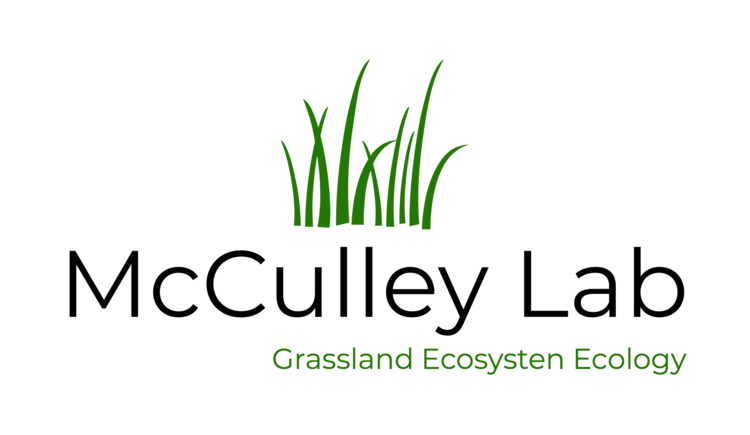Effects of a Fungal Endophyte Symbiosis on Managed Grassland Nutrient Dynamics and Resilience to Climate Change
Plant-microbe symbioses can be important in governing ecosystem responses to climate change. One example occurs with tall fescue (Schedonorus arundinaceus), a predominant cool season forage in managed grasslands of the eastern U.S., and its leaf fungal endophyte (Epichloë coenophiala). Infection with the common toxic strain of Epichloë improves fescue’s ability to resist environmental stressors, including drought and other likely impacts of climate change, and endophyte infection can increase soil C sequestration, modify greenhouse gas (GHG) fluxes, and alter soil microbial community composition and function. However, toxic alkaloids produced by this strain of the endophyte negatively affect animal production, and have led to the inoculation of fescue with “non-toxic” strains. Whether these non-toxic endophytes confer a similar level of environmental stress resistance or GHG mitigation is unknown.
To address this knowledge gap, we will leverage two existing field projects to accomplish the following objectives: (i) Quantify the effects of fescue-fungal endophyte symbiosis on soil microbial communities, soil C pools, and GHG emissions; (ii) Quantify how different strains of fungal endophytes affect these parameters; and (iii) Determine whether manipulation of fescue-fungal endophyte symbioses can improve the resilience of managed grasslands to elevated temperature and reduced water availability, while simultaneously increasing soil C sequestration and reducing GHG emissions. The proposed work will allow us to assess whether it is possible to improve the resilience of fescue pastures, the base of animal production for much of the eastern US, and mitigate the effects of climate change on these pastures by manipulating grass-endophyte symbioses.
The experimental climate manipulations began on April 29, 2016 and are currently running. The plots originally included tall fescue material from collaborator R.D. Dinkins and Canada Wild Rye material from collaborator Carolyn Young. We added red clover to replace the Canada Wild Rye in March 2018. We are currently measuring a variety of plant and soil parameters.
Effects of warming and altered precipitation regime on managed grassland structure and function
Managed grasslands cover >12 million hectares of the United States and are particularly predominant within the ‘transition zone' from subtropical to temperate climes in the southeastern region. Despite the large acreage and significant contribution to regional net primary production (NPP) coming from these grasslands, no scientific studies addressing their response to alterations in climate have been performed to date. The primary objective of this study is to determine how alterations in precipitation and temperature impact managed grassland structure and function.
Managed grasslands are dominated by ‘forage' species bred to support high levels of production across broad environmental conditions and to withstand grazing. These species employ different mechanisms to attain these characteristics, some of which may be more responsive to changes in climate than others. For example, a drier environment may favor endophyte-infected tall fescue over other cool season forages because the symbiotic fungal relationship confers drought resistance to the plant. Conversely, a warmer, wetter climate may promote species capable of rapid maturation or producing secondary compounds. Such species shifts and associated changes in litter quality may directly impact nutrient cycling in these ecosystems. This project tests the hypotheses that: 1) climate change (in the form of increased temperature and precipitation) will have predictable consequences on managed grassland structure based on known species-specific traits; and 2) these changes in structure will alter grassland function, specifically NPP and trace gas flux.
This project ran from 2009-2013. Data are currently being analyzed and written up. The infrastructure has been modified to support a new climate change-grass-fungal endophyte project that started April 2016 (see 'Symbiotic Climate Resiliency' above).
Associated Manuscripts:
Slaughter, L.C., J.A. Nelson, E. Carlisle, M. Bourguignon, R.D. Dinkins, T.D. Phillips, and R.L. McCulley. 2018. Climate change and Epichloë coenophiala association modify belowground fungal symbioses of tall fescue host. Fungal Ecology 31: 37-46.
Bourguignon, M., J.A. Nelson, A.E. Carlisle, H. Ji, R.D. Dinkins, T.D. Phillips, and R.L. McCulley. 2015. Ecophysiological responses of tall fescue genotypes to fungal endophyte infection and elevated temperature and precipitation. Crop Science 55:2895-2909. doi: 10.2135/cropsci2015.01.0020.Slaughter, L.C., M.N. Weintraub, and R.L. McCulley. 2015. Seasonal effects stronger than three-year climate manipulation on grassland soil microbial community. Soil Science Society of America Journal 79:1352-1365. doi: 10.2136/sssaj2014.10.0431
McCulley, R.L., L.P. Bush, A.E. Carlisle, H. Ji, J.A. Nelson. 2014. Warming reduces tall fescue abundance but stimulates toxic alkaloid concentrations in transition zone pastures of the U.S.” Frontiers in Chemistry, 10.3389/fchem.2014.00088
Rúa, M.A., R.L. McCulley, and C.E. Mitchell. 2014. Climate drivers, host identity and fungal endophyte infection determine virus prevalence in a grassland ecosystem. Journal of Ecology 102(3):690-699.
Brosi, G.B., R.L. McCulley, L.P. Bush, J.A. Nelson, A.T. Classen, and R.J. Norby. 2011. Effects of multiple climate change factors on the tall fescue – fungal endophyte symbiosis: infection frequency and tissue chemistry. New Phytologist 189:797-805.
Please contact Rebecca for copies
New Zealand GRASS
Rebecca received a Global Research Alliance Senior Scientist award to collaborate with AgResearch scientists in Palmerston North, NZ, from January 11 – April 2, 2016. During her stay, the team quantified N2O soil-to-atmosphere greenhouse gas emissions from high- and low-sugar perennial ryegrass material that had either high- or low-endophyte infection status and was being grown in the New Zealand Free Air Carbon Dioxide Enrichment facility. High sugar grasses and endophyte-grass symbioses are arguably the two most important developments in plant breeding for grasslands in recent times. Our research is therefore evaluating the possibility of managing N2O emissions through plant selection and endophyte manipulation within a climate change scenario.
Data are being analyzed and written up.



